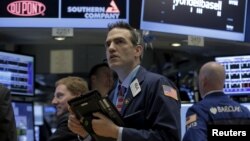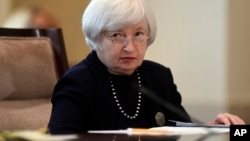Going into Friday trade, U.S. stocks were set to post their fourth weekly gain as the S&P 500 was up eight out of nine days. All 10 sectors in the index were trading higher. Since the February 11 low, the S&P 500 has gained nearly 9 percent to trade just below 2 percent year-to-date.
Both the S&P 500 and Dow Jones Industrial Average traded through key technical levels on the charts. Traders look at these levels to confirm bullish action (or bearish, depending on the prevailing trend). The rebound was mostly led by the energy sector with crude oil trading at its best prices in over three months.
While crude oil is enjoying the spotlight, natural gas is quietly making a rebound after falling to multi-decade lows on March 1. Phil Davis, Founder of Phil’s Stock World, joined us this week, explaining why he is building positions in the physical commodity of natural gas, as well as the United States Natural Gas ETF, ticker symbol UNG.
Demand for natural gas dropped to a 31-year low in recent weeks, while storage remained at all-time highs. Davis said, “With the advent of liquid natural gas (LNG) exporting, you now have a set global price. LNG will now be exported around the world, and this oversupply will start to draw down leading to higher prices in natural gas.”
Another factor contributing to the surge in stocks is participation from the financial sector, which was largely unexpected because low-to-negative interest rates are a challenge to bank earnings and growth. Just this Thursday, the European Central Bank (ECB) announced it was cutting its main interest rate and expanding its massive bond-buying program.
Steven Kalayjian of KnowVera said more Quantitative Easing (QE) from central banks is bad for the markets because it artificially inflates asset prices.
“Since 2008, global central banks, including the Federal Reserve, have cut rates over 650 times, which has not spurred any economic growth. In fact, global GDPs are in a decline,” Kalayjian said. “The recent rally is based on false hope of more Quantitative Easing when markets should be moving on solid fundamentals like strong corporate earnings and healthy economic data.”
Mark Friedgan, Co-Founder & CIO of Eligo Energy, is in agreement with Kalayjian. “While QE may have been necessary to preserve the global economy when it began, after more than seven years of various forms of QE worldwide, it must eventually end,” Friedgan said. “The concern I have is that this end to artificial government influence on the economy will result in a day of reckoning for investors who have been chasing yield in both exchange-traded assets and private investment. The economy and markets must prove that they can survive and grow substantially without this government tailwind.”
Week Ahead:
While the bulls are enjoying this rally, there are several events for the trading week ahead that could bring some volatility back. Friday will bring what is known as Quadruple Witching. Quad Witch occurs four times a year, once per quarter in March, June, September and December. On those days, contracts for stock index futures, stock index options, stock options and single-stock futures all expire together. Because traders attempt to unwind their futures and options positions before they expire, and, frequently, new contracts are purchased to replace closed ones, the days leading up to Quad Witch Fridays tend be more volatile as volume surges with all the transactions.
Possibly one of the most important trading days of the year will be this Wednesday, March 16. Most traders expect sideways-to-higher price action leading into the Federal Open Market Committee (FOMC) interest rate decision on Wednesday at 2 p.m. ET, followed by a press conference at 2:30 p.m. ET with Federal Reserve Chairman, Janet Yellen.
It is widely expected, the Fed will NOT raise rates, especially since the European Central Bank cut rates this past week. That said, as the headlines hit, trading will be extreme to the up and downside of the tape as analysts pick apart everything Yellen says at the press conference to discern what clues she may give on future monetary policy.
In addition to the Federal Reserve policy decision, other central banks will be updating their monetary policies including: the Bank of Japan, Bank of England, Swiss National Bank and the Bank of Russia.
Ben Hunt of Salient Partners notes in a research report regarding policy that, “We can gnash our teeth all we want about the hypocrisy and manipulation that's inherent in this exercise, or we can play the game and maybe make some money. We can focus on reality and stay negative on risk assets, or we can focus on the narrative and be positive on risk assets.”
Several key pieces of headline-moving economic data are coming throughout the week both in the U.S. and around the world. In the U.S., Retail Sales, Housing and Manufacturing data are scheduled to be released. U.S. traders will also be watching for EuroZone Employment, Consumer Price Indicators and Trade Balance Data.
The earnings calendar is very light, but there are a few company reports traders will be looking for including: Valeant Pharmaceuticals (VRX), Oracle (ORCL) and FedEx (FDX). FDX is important to watch because it is viewed as an economic barometer since it delivers freight to companies and individuals around the world. Analysts for some color on global economic growth expectations since FDX is on the front line of consumer demand.









